Rank University-- Country Overall Score
1 University of Cambridge--United Kingdom 100.0
2 Harvard University--United States 99.2
3 Yale University--United States 98.7
4 UCL (University College London)--United Kingdom 98.5
5 Massachusetts Institute of Technology (MIT)--United States 98.2
6 University of Oxford--United Kingdom 98.2
7 Imperial College London--United Kingdom 97.8
8 University of Chicago--United States 97.5
9 California Institute of Technology (Caltech)--United States 96.5
10 Princeton University--United States 96.0
top 10 songs,top 10 music,top 10 movies,top 10 web sites,top 10 web hosting, top 10 poeples, top 10 richest poeple, top 10 companies,top 10 google adsense earners,top 10 everything....
Saturday, December 11, 2010
Top 10 Hollywood Highest-Paid Actors 2010
1. Johnny Depp ($75 million)

His name has become a guarantee for a successful movie. His newest movie Alice In Wonderland earns $1 billion and Public Enemies earns $214 million.
2. Ben Stiller ($53 million)

Some of his movies earned $2 billion in the United States, makes his name always in the list of Hollywood highest-paid actors.
3. Tom Hanks ($45 million)

His Angels and Demons earns global income of $485 million. Angels and Demons is the second movie adapted from Dan Brown's novel. The previous movie The Da Vinci Code earned $780 million globally.
4. Adam Sandler ($40 million)
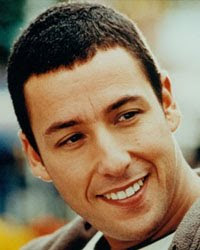
His name is still a magnet for the audience, specially for romantic-comedy movie fans. Some of his movies has a real success in the market.
5. Leonardo Di Caprio ($28 million)

His movie Shutter Island earns $295 million globally, put him fifth in the list of highest-paid actors.
6. Daniel Radcliffe ($25 million)

Become one of the highest-paid actors this time because his role in Harry Potter movies. All Harry Potter movies always successful and the total income from all Harry Potter movies has reach $5.4 billion in Box Office.
7. Robert Downey Jr ($22 million)

His name rockets higher after huge success in Iron Man and Iron Man 2 which earned a total of $1.1 billion.
8. Tom Cruise (22 million)

Even though his popularity is decreasing lately and no new movie in a period of June 2009 - June 2010, but Tom Cruise still earns from his old movie played on TV.
9. Brad Pitt ($20 million)

His latest movie Inglourious Basterds earns global income o $314 million and his private life with Angelina Jolie always become headline on the media. Brad Pitt's name has become a strong magnet in the entertainment world.
10. George Clooney ($19 million)

Nominated in Oscar 2010 because of his role in Up In the Air and the movie earns $163 million, despite the production cost is only $25 million.

His name has become a guarantee for a successful movie. His newest movie Alice In Wonderland earns $1 billion and Public Enemies earns $214 million.
2. Ben Stiller ($53 million)

Some of his movies earned $2 billion in the United States, makes his name always in the list of Hollywood highest-paid actors.
3. Tom Hanks ($45 million)

His Angels and Demons earns global income of $485 million. Angels and Demons is the second movie adapted from Dan Brown's novel. The previous movie The Da Vinci Code earned $780 million globally.
4. Adam Sandler ($40 million)

His name is still a magnet for the audience, specially for romantic-comedy movie fans. Some of his movies has a real success in the market.
5. Leonardo Di Caprio ($28 million)

His movie Shutter Island earns $295 million globally, put him fifth in the list of highest-paid actors.
6. Daniel Radcliffe ($25 million)

Become one of the highest-paid actors this time because his role in Harry Potter movies. All Harry Potter movies always successful and the total income from all Harry Potter movies has reach $5.4 billion in Box Office.
7. Robert Downey Jr ($22 million)

His name rockets higher after huge success in Iron Man and Iron Man 2 which earned a total of $1.1 billion.
8. Tom Cruise (22 million)

Even though his popularity is decreasing lately and no new movie in a period of June 2009 - June 2010, but Tom Cruise still earns from his old movie played on TV.
9. Brad Pitt ($20 million)

His latest movie Inglourious Basterds earns global income o $314 million and his private life with Angelina Jolie always become headline on the media. Brad Pitt's name has become a strong magnet in the entertainment world.
10. George Clooney ($19 million)

Nominated in Oscar 2010 because of his role in Up In the Air and the movie earns $163 million, despite the production cost is only $25 million.
Top 10 Best Flash Websites of 2010
Top 10 Best Flash Websites of 2010
1 | Moodstream | Getty Moodstream is a hypnotic website brought to you by the folks at Getty Images that offers a brainstorming tool designed to help get your creative juices flowing. By simply tweaking the mood sliders you can adjust a stream of images, footage, & audio that can help inspire your creative direction.
Best Flash Websites | Website Design & Development
2 | Monoface
Mono is an advertising agency based in Minneapolis, MN that lives by the motto that "simpler is better." The "Mono"face site lives up to that motto by presenting visitors with a fun and simple Flash application that allows them to sculpt a Mr. Potato Head style face that contains 759,375 entertaining possibilities.
Best Flash Websites | Website Design & Development
3 | Waterlife
Waterlife is a showcase for the documentary film of the same name that offers its audience a wonderful preview of the lush cinematography and rich storytelling found in the film. The true genius of the site, however, is found in its fluid navigation that recalls the gentle motion of a lake.
Best Flash Websites | Website Design & Development
4 | Marc Ecko
MarcEcko.com is a wonderful example of using the vast possibilities of Flash to accurately reflect the ethos of a consumer brand within a website. Even visitors unfamiliar with the Ecko brand will feel they understand the art & philosophy it symbolizes within a few minutes of touring the site.
Best Flash Websites | Website Design & Development
5 | HBO - Home Box Office
In January 2010 HBO relaunched its website so that, in their own words they could, "create a rich, interactive online destination worthy of the HBO brand" and we believe they have done just that. HBO.com accomplishes this by using Flash to enhance the must-see appeal of the networks exclusive shows.
Best Flash Websites | Website Design & Development
6 | Get The Glass
Get The Glass is the work of the California Milk Processor Board and was designed to encourage increased milk consumption by inviting visitors to participate in a comically entertaining Flash based game whose objective is to Get the Glass--of milk of course. The current design appeared in late 2007.
Best Flash Websites | Website Design & Development
7 | AgencyNet Interactive
AgencyNet Interactive is a design studio based in New York City, NY and Fort Lauderdale, FL whose current website design appeared in January of 2010. Absolutely stunning site! The depth and functionality of the site far surpasses any Flash based site we've ever seen, but don't take our word for it...
Best Flash Websites | Website Design & Development
8 | 2Advanced Studios
2Advanced Studios is an interactive design firm based in Aliso Viejo, CA whose current design appeared in August 2006. 2Advanced has always been known for their stylish neo-ancient homepage design, but their latest redesign takes that to a whole new level with a background mural that is truly inspiring.
Best Flash Websites | Website Design & Development
2Advanced Studios is an interactive design firm based in Aliso Viejo, CA whose current design appeared in August 2006. 2Advanced has always been known for their stylish neo-ancient homepage design, but their latest redesign takes that to a whole new level with a background mural that is truly inspiring.
Best Flash Websites | Website Design & Development
9 | Dave Werner's Portfolio
Dave Werner uses his Flash skills not only to publish his portfolio, but through the use of well narrated video, he also gives visitors a sense of his personal story which seeks to give stronger voice and context to his featured work. The current version of OkayDave.com went live in mid 2006.
Best Flash Websites | Website Design & Development
10 | Section Seven Inc.Dave Werner uses his Flash skills not only to publish his portfolio, but through the use of well narrated video, he also gives visitors a sense of his personal story which seeks to give stronger voice and context to his featured work. The current version of OkayDave.com went live in mid 2006.
Best Flash Websites | Website Design & Development
Section Seven Inc. is a website design studio that has utilizes the power of Flash to create a truly unique navigation system that allows users to tour their portfolio in style. Their current site appeared on the web in early 2007 and has received numerous awards including the prestigious FWA.
Best Flash Websites | Website Design & Development
Five Top Google Adsense Earners 2010
Reading about the successes of these five top Google Adsense earners would hopefully encourage you to continue to work with increasing your Adsense earnings. These people are great examples that the Google Adsense program is a lucrative one.
1. Markus Frind

Owner of PlentyofFish.com
Earnings per month : $300,000
Markus Frind is the sole owner of the free online dating site PlentyofFish.com. He created the website all by himself at home. It’s a membership site which has attracted many visitors. And through word of mouth, his site has become one of the most visited dating sites on the internet earning him $300,000 a month in Adsense.
2. Kevin Rose

Owner of Digg.com
Earnings per month : $250,000
Digg.com is a site where members post news, videos, audios and pictures on the site. It’s a social bookmarking site where members would cast votes on postings made by other members. With enough votes on a posting, that posting will be featured on the front page of the site and will receive tons of traffic. Kevin Rose started his site in 2008 and is proud to be earning $250,000 a month just from Google Adsense.
3. Jeremy Schoemaker

Owner of Shoemoney Media Group Inc
Earnings per month : $140,000
Schoemaker is a genius at search engine optimization. Therefore his hundreds of websites are able to get tons of organic traffic which is how he earns money from Google Adsense.
4. Jason Calacanis

Owner of Weblogs, Inc
Earnings per month : $120,000
Weblogs, Inc started operation in 2003 and by October 2005, AOL bought it for $25 million.
5. David Miles Jr and Kato Leonard

Owner of FreeWebLayouts.net
Earnings per month : $100,000
Their website provides free mySpace layouts, backgrounds and graphics to members. The amount of traffic which the website received has managed the duo to earn $100,000 a month from Google Adsense advertising.
You would notice that the above top five Google Adsense earners do not sell any product. In fact, they give away free stuffs and free membership but they manage to rake in hundreds of thousands of dollars each month. The secret to their success is simple and that is traffic. Give away things for free and people will flock to your website.
1. Markus Frind

Owner of PlentyofFish.com
Earnings per month : $300,000
Markus Frind is the sole owner of the free online dating site PlentyofFish.com. He created the website all by himself at home. It’s a membership site which has attracted many visitors. And through word of mouth, his site has become one of the most visited dating sites on the internet earning him $300,000 a month in Adsense.
2. Kevin Rose

Owner of Digg.com
Earnings per month : $250,000
Digg.com is a site where members post news, videos, audios and pictures on the site. It’s a social bookmarking site where members would cast votes on postings made by other members. With enough votes on a posting, that posting will be featured on the front page of the site and will receive tons of traffic. Kevin Rose started his site in 2008 and is proud to be earning $250,000 a month just from Google Adsense.
3. Jeremy Schoemaker

Owner of Shoemoney Media Group Inc
Earnings per month : $140,000
Schoemaker is a genius at search engine optimization. Therefore his hundreds of websites are able to get tons of organic traffic which is how he earns money from Google Adsense.
4. Jason Calacanis

Owner of Weblogs, Inc
Earnings per month : $120,000
Weblogs, Inc started operation in 2003 and by October 2005, AOL bought it for $25 million.
5. David Miles Jr and Kato Leonard

Owner of FreeWebLayouts.net
Earnings per month : $100,000
Their website provides free mySpace layouts, backgrounds and graphics to members. The amount of traffic which the website received has managed the duo to earn $100,000 a month from Google Adsense advertising.
You would notice that the above top five Google Adsense earners do not sell any product. In fact, they give away free stuffs and free membership but they manage to rake in hundreds of thousands of dollars each month. The secret to their success is simple and that is traffic. Give away things for free and people will flock to your website.
World richest poeples list 2010
Mukesh Ambani is ranked fourth among the World's top 10 billionaires by the Forbes Magazine with total assets worth $29 billion followed by another Indian, steel tycoon L N Mittal, who ranked fifth with a total value of $28.7 billion.
The Forbes Billionaires list for 2010 has witnessed Mexican Carlo Slim surpassing Bill Gates and Warrant Buffett to be the richest man on the earth. Slim's total worth rose $18.5 billion during the year to an estimated $53.5 billion, the Forbes Magazine said. Gates remained second with a fortune of $53 billion.
Apart from Reliance Industries Chairman Mukesh Ambani and Head of ArcelorMittal L N Mittal, there were four other Indian tycoons in the top 50 list and 49 others in the complete list of 1,011 billionaires.
The four Indian businessmen, besides Ambani and Mittal, in the top 50 list are Azim Premji (ranked: 28, worth: $17 billion), Sashi Ruia and Ravi Ruia (ranked: 40, worth: $13 billion), and Savitri Jindal (ranked: 44, worth: $12.2 billion).
DLF's K P Singh (74), Aditya Birla Group's Kumar Mangalam Birla (86) and Bharti Airtel's Head Sunil Mittal (87) are the other Indians who are among the top 100 wealthy in India.
Top 10 list
1. Carlos Slim Helu

$53.5
2. Bill Gates

$53.0
3. Warren Buffet

$47.0
4. Mukesh Ambani

$29.0
5. Lakshmi Mittal

$28.7
6. Lawrence Ellison

$28.0
7. Bernard Arnault

$27.5
8. Eike Batista

$27.0
9. Amancio Ortega

$25.0
10. Karl Albrecht

$23.5
The Forbes Billionaires list for 2010 has witnessed Mexican Carlo Slim surpassing Bill Gates and Warrant Buffett to be the richest man on the earth. Slim's total worth rose $18.5 billion during the year to an estimated $53.5 billion, the Forbes Magazine said. Gates remained second with a fortune of $53 billion.
Apart from Reliance Industries Chairman Mukesh Ambani and Head of ArcelorMittal L N Mittal, there were four other Indian tycoons in the top 50 list and 49 others in the complete list of 1,011 billionaires.
The four Indian businessmen, besides Ambani and Mittal, in the top 50 list are Azim Premji (ranked: 28, worth: $17 billion), Sashi Ruia and Ravi Ruia (ranked: 40, worth: $13 billion), and Savitri Jindal (ranked: 44, worth: $12.2 billion).
DLF's K P Singh (74), Aditya Birla Group's Kumar Mangalam Birla (86) and Bharti Airtel's Head Sunil Mittal (87) are the other Indians who are among the top 100 wealthy in India.
Top 10 list
1. Carlos Slim Helu

$53.5
2. Bill Gates

$53.0
3. Warren Buffet

$47.0
4. Mukesh Ambani

$29.0
5. Lakshmi Mittal

$28.7
6. Lawrence Ellison

$28.0
7. Bernard Arnault

$27.5
8. Eike Batista

$27.0
9. Amancio Ortega

$25.0
10. Karl Albrecht

$23.5
Top 10 web sites 2010
We've listed the websites alphabetically, with host organization listed in italics if different from the website name. This list is based on nominations by Planetizen readers and staff, and judged against a common set of criteria, including content, design, and usability.

With Netflix streaming movies and shows migrating to Hulu, time in front of the TV set is becoming increasingly scarce. Meanwhile, PBS and NPR have become more relevant than ever, cranking out high-quality documentaries that are timely and topical, and yes, often online. Blueprint America is a PBS series on dedicated to that least sexy of topics, infrastructure. The "Beyond the Motor City" episode goes deeper than most reporting into Detroit's woes, and is supplemented on the website by additional interviews and slideshows. e2 is a sexier PBS series, but with episodes tackling high speed rail, gas taxes, and the stimulus package, Blueprint America is a more realistic look at the nuts and bolts issues facing the U.S.

The locked doors of the government are now open. This site contains three separate catalogs of data and data-based tools for government information: the raw data catalog, which includes a variety of data streams and file formats, the online tool catalog of compiled searches and resources, and the geodata catalog of geography-based data streams. Data.gov is part of the federal government's Open Government Directive, this website is a clearinghouse for federal public information. It's also a major part of the government's effort to become more accessible and transparent. As the potential of open data and open government evolve, this site is likely to play a major role in the way government information is shared.

Like its name implies, GOOD is a magazine focused on the good things in life. Not luxuries so much, but more along the lines of good ideas. It's a quarterly print magazine that has developed into a vibrant online publication. The magazine was founded in 2006, but over the course of the last year it has taken on a strong city focus in its editorial work. With innovative and well-designed infographics, and a raft of columns and articles on design, neighborhoods and cities, GOOD is developing into an accessible and lay-person friendly discussion of the best ideas in citymaking and community improvement. Good indeed.

The Infrastructurist is possibly the most comprehensive and focused resource for infrastructure-related news in the United States. But the story doesn't stop at the border. This well-informed and mainly objective website covers the range of infrastructure issues being faced all over the globe -- from high speed rail to highway sprawl to renewable energy. As global cities lean away from the private automobile and towards public transit systems, The Infrastructurist's editorial purview is wonkiness that's right on time.

http://laist.com/
http://dcist.com/
During the internet boom, a lot of companies were seeking to create the go-to source for local and "hyper-local" news. After all, with newspapers dying and taking far too long to get a real web presence, there was a real void for local coverage. A number of challengers stood up, but the "Ist" network pulled it off with style. And, amazingly, they've kept up the promise of internet news with timely coverage of local government issues, including the goings-on at the planning department and city hall. LAist, for one, has done a great job of reporting the ongoing fiascos at the planning department over the plague of digital billboards. Granted, among the city reportage are band listings, random Flickr photos, and rumors, but the Ists regularly bring breaking local news that leave local newspapers in the dust.

The Lincoln Institute of Land Policy is an international research organization that focuses on issues of land use, regulation and taxation. They also happen to have a highly useful website that is thick with resources and tools, including a database with everything you'd ever need to know about the property tax; a collection of 'visual tools' to communicate planning concepts; and a collection of 700 case studies of colleges and universities and how they integrate into urban neighborhoods. While not the sexiest of websites in terms of design, there's a wealth of interesting research for land use professionals.

Places is the new online home of Places Journal, the interdisciplinary journal of contemporary architecture, landscape and urbanism. Published since 1983, Places has played a vibrant and active role in the urban discourse, and its new online form broadens that conversation. Featuring commentaries, academic essays, and archives dating back to issue one, Places offers a valuable new home for thoughtful discussion and analysis of urbanism and place.

Harnessing the power of the crowd, SeeClickFix is an easy-to-use web interface that allows citizens to identify and report problems in their communities -- and track their progress (or lack thereof). With search capabilities, mapping tools and problem trackers, concerned citizens can keep tabs on the civic problems in their communities and make sure their local officials do, too. SeeClickFix is one of the most promising tools to enhance public participation in government.

There are a lot of blogs and sites out there covering transit and transportation issues, but Yonah Freemark has created a newspage that is a cut above the fray. The front page features detailed reportage on the world's transit systems, with insightful commentary. But deeper in, the site is an encyclopedia of existing, under construction and planned transit systems. Freemark is an independent researcher based in France who somehow manages to seem like he is everyplace at once.

Walkshed is the brainchild of software developer Aaron Ogle. it takes the Walkscore concept and puts the controls in your hands. For example, if you hate to cook and groceries and farmer's markets mean nothing to you but restaurants and coffee shops are essential, then you can weight those factors more heavily. Walkshed generates a heatmap over your area to show you the areas of your city that cater most to your particular needs. So far Ogle has only covered New York and Philadelphia, but the model looks highly promising and is easy to use.

Fast Company has evolved over the years from a internet-boom, business culture magazine into a force to be reckoned with. It's difficult to pin down their beat- their category headers include "ethonomics" (uh, what?), design and leadership. But whatever they're covering, Fast Company reads like a less Red Bull-fueled version of Wired, and that's a good thing. And now with the advent of a new expert blog specifically geared towards cities written by Greg Lindsay, the website is richer than ever.
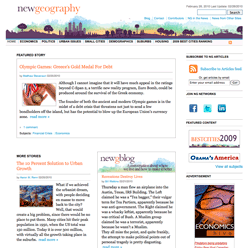
It was inevitable that certain voices that reject the current belief system of urban planning- people like Wendell Cox, Joel Kotkin, and Michael Lind- would band together. What wasn't inevitable is that their collaboration would be readable, fair, and dare we say, balanced. With a bent towards the libertarian, Kotkin and crew cover urban issues, housing, politics and the suburbs with a hefty dose of demographics and GIS maps.

Canadian planning -- for those south of the border -- is often equated with Vancouver. But there's a whole lot more going on up in the Great White North. The magazine Spacing is the authority on Canadian urbanism and public space. Its two online homes Spacing Toronto and Spacing Montreal track the urban development and public sphere of those two Canadian cities, offering a detailed look at Canada-specific politics, land use issues, green development and urbanism that opens the Canadian conversation beyond B.C.

Smartly-written and approachable, the Urbanophile is a trove of urban solutions. Written by Aaron Renn, the site focuses on urban improvement strategies, with a mainly Midwest bent. With a global recession and continued problems in the former industrial areas of the United States, the fresh ideas and innovative suggestions outlined almost daily in the Urbanophile offer a cogent and achievable sense of hope for the urban areas of the world.

Blueprint America
www.pbs.org/wnet/blueprintamerica/With Netflix streaming movies and shows migrating to Hulu, time in front of the TV set is becoming increasingly scarce. Meanwhile, PBS and NPR have become more relevant than ever, cranking out high-quality documentaries that are timely and topical, and yes, often online. Blueprint America is a PBS series on dedicated to that least sexy of topics, infrastructure. The "Beyond the Motor City" episode goes deeper than most reporting into Detroit's woes, and is supplemented on the website by additional interviews and slideshows. e2 is a sexier PBS series, but with episodes tackling high speed rail, gas taxes, and the stimulus package, Blueprint America is a more realistic look at the nuts and bolts issues facing the U.S.

Data.gov
www.data.gov/The locked doors of the government are now open. This site contains three separate catalogs of data and data-based tools for government information: the raw data catalog, which includes a variety of data streams and file formats, the online tool catalog of compiled searches and resources, and the geodata catalog of geography-based data streams. Data.gov is part of the federal government's Open Government Directive, this website is a clearinghouse for federal public information. It's also a major part of the government's effort to become more accessible and transparent. As the potential of open data and open government evolve, this site is likely to play a major role in the way government information is shared.

GOOD
http://www.good.is/Like its name implies, GOOD is a magazine focused on the good things in life. Not luxuries so much, but more along the lines of good ideas. It's a quarterly print magazine that has developed into a vibrant online publication. The magazine was founded in 2006, but over the course of the last year it has taken on a strong city focus in its editorial work. With innovative and well-designed infographics, and a raft of columns and articles on design, neighborhoods and cities, GOOD is developing into an accessible and lay-person friendly discussion of the best ideas in citymaking and community improvement. Good indeed.

The Infrastructurist
www.infrastructurist.com/The Infrastructurist is possibly the most comprehensive and focused resource for infrastructure-related news in the United States. But the story doesn't stop at the border. This well-informed and mainly objective website covers the range of infrastructure issues being faced all over the globe -- from high speed rail to highway sprawl to renewable energy. As global cities lean away from the private automobile and towards public transit systems, The Infrastructurist's editorial purview is wonkiness that's right on time.

The "Ists"
http://gothamist.com/http://laist.com/
http://dcist.com/
During the internet boom, a lot of companies were seeking to create the go-to source for local and "hyper-local" news. After all, with newspapers dying and taking far too long to get a real web presence, there was a real void for local coverage. A number of challengers stood up, but the "Ist" network pulled it off with style. And, amazingly, they've kept up the promise of internet news with timely coverage of local government issues, including the goings-on at the planning department and city hall. LAist, for one, has done a great job of reporting the ongoing fiascos at the planning department over the plague of digital billboards. Granted, among the city reportage are band listings, random Flickr photos, and rumors, but the Ists regularly bring breaking local news that leave local newspapers in the dust.

Lincoln Institute of Land Policy
www.lincolninst.edu/The Lincoln Institute of Land Policy is an international research organization that focuses on issues of land use, regulation and taxation. They also happen to have a highly useful website that is thick with resources and tools, including a database with everything you'd ever need to know about the property tax; a collection of 'visual tools' to communicate planning concepts; and a collection of 700 case studies of colleges and universities and how they integrate into urban neighborhoods. While not the sexiest of websites in terms of design, there's a wealth of interesting research for land use professionals.

Places
places.designobserver.com/Places is the new online home of Places Journal, the interdisciplinary journal of contemporary architecture, landscape and urbanism. Published since 1983, Places has played a vibrant and active role in the urban discourse, and its new online form broadens that conversation. Featuring commentaries, academic essays, and archives dating back to issue one, Places offers a valuable new home for thoughtful discussion and analysis of urbanism and place.

SeeClickFix
seeclickfix.com/citizensHarnessing the power of the crowd, SeeClickFix is an easy-to-use web interface that allows citizens to identify and report problems in their communities -- and track their progress (or lack thereof). With search capabilities, mapping tools and problem trackers, concerned citizens can keep tabs on the civic problems in their communities and make sure their local officials do, too. SeeClickFix is one of the most promising tools to enhance public participation in government.

The Transport Politic
www.thetransportpolitic.com/There are a lot of blogs and sites out there covering transit and transportation issues, but Yonah Freemark has created a newspage that is a cut above the fray. The front page features detailed reportage on the world's transit systems, with insightful commentary. But deeper in, the site is an encyclopedia of existing, under construction and planned transit systems. Freemark is an independent researcher based in France who somehow manages to seem like he is everyplace at once.

Walkshed
www.walkshed.org/Walkshed is the brainchild of software developer Aaron Ogle. it takes the Walkscore concept and puts the controls in your hands. For example, if you hate to cook and groceries and farmer's markets mean nothing to you but restaurants and coffee shops are essential, then you can weight those factors more heavily. Walkshed generates a heatmap over your area to show you the areas of your city that cater most to your particular needs. So far Ogle has only covered New York and Philadelphia, but the model looks highly promising and is easy to use.
Honorable Mentions

Fast Company
www.fastcompany.com/Fast Company has evolved over the years from a internet-boom, business culture magazine into a force to be reckoned with. It's difficult to pin down their beat- their category headers include "ethonomics" (uh, what?), design and leadership. But whatever they're covering, Fast Company reads like a less Red Bull-fueled version of Wired, and that's a good thing. And now with the advent of a new expert blog specifically geared towards cities written by Greg Lindsay, the website is richer than ever.

New Geography
www.newgeography.com/It was inevitable that certain voices that reject the current belief system of urban planning- people like Wendell Cox, Joel Kotkin, and Michael Lind- would band together. What wasn't inevitable is that their collaboration would be readable, fair, and dare we say, balanced. With a bent towards the libertarian, Kotkin and crew cover urban issues, housing, politics and the suburbs with a hefty dose of demographics and GIS maps.

Spacing
spacing.ca/Canadian planning -- for those south of the border -- is often equated with Vancouver. But there's a whole lot more going on up in the Great White North. The magazine Spacing is the authority on Canadian urbanism and public space. Its two online homes Spacing Toronto and Spacing Montreal track the urban development and public sphere of those two Canadian cities, offering a detailed look at Canada-specific politics, land use issues, green development and urbanism that opens the Canadian conversation beyond B.C.

Urbanophile
www.urbanophile.com/Smartly-written and approachable, the Urbanophile is a trove of urban solutions. Written by Aaron Renn, the site focuses on urban improvement strategies, with a mainly Midwest bent. With a global recession and continued problems in the former industrial areas of the United States, the fresh ideas and innovative suggestions outlined almost daily in the Urbanophile offer a cogent and achievable sense of hope for the urban areas of the world.
Top 10 movies in year 2010
“Best of the Decade” list I came up with last year. As for what they might have been, read on.
10. “How to Train Your Dragon”: The first must-see movie of 2010 was also one of the year’s best surprises. What started off as an animated 3-D romp that was aimed squarely at kids soon turned into a rousing, exciting and very moving family adventure that adhered to the timeless sensibilities of “boy-and-his-dog”-style classics like “E.T.: The Extra-Terrestrial” and “The Black Stallion.” With the “Shrek” series running on fumes after four installments, DreamWorks Animation scored a fire-breathing hit that launched a brand new franchise.
9. “The Town”: In Hollywood, everyone loves a great comeback story (just ask Robert Downey Jr.). So after years of being better known as a tabloid punchline than as an esteemed filmmaker, Ben Affleck followed his solid directorial debut, 2007’s “Gone Baby Gone,” with this gritty Boston crime drama that was gripping, entertaining and wholly engrossing from start to finish. With only his second time behind the camera, Affleck proved that he was as technically proficient at staging elaborate bank heists and intense car chases as he was at crafting an engaging story with fully realized characters.
8. “Kick-Ass”: Talk about a movie that lived up to its name, “Kick-Ass” gave the superhero genre, which had been getting a bit stale and formulaic in recent years, a swift kick in the you-know-what. Thanks to an energetic vibe, a smart story and amazing performances from Aaron Johnson and Chloe Grace Moretz (who stole the movie as the foul-mouthed Hit-Girl), “Kick-Ass” did just that as one of the best superhero movies of all time.
7. “Waiting for Superman”: By taking an exhaustive review of the U.S. public school system that was just as informative as it was infuriating, director Davis Guggenheim did for education what his Oscar-winning documentary from 2004, “An Inconvenient Truth,” did for the environment. Despite the efforts of a few idealistic saviors who had brave ideas to restore the system to greatness, the government, as usual, turned out to be its own worst enemy. If you still haven’t seen “Waiting for Superman,” see it now; you might learn something.
6. “127 Hours”: Director Danny Boyle and screenwriter Simon Beaufoy followed up their Oscar-winning Best Picture “Slumdog Millionaire” with another unforgettable cinematic experience that celebrated the instinct to survive and the triumph of the human spirit. But it was James Franco’s bravura performance as trapped adventurer Aron Ralston that took the film to a powerful emotional level that stayed with you for well over 127 hours.
5. “Inception”: If there was ever a movie that absolutely needed to be seen twice, this was it. Actually, seeing it just twice barely scratched the surface of writer-director Christopher Nolan’s cerebral, mind-bending and mind-blowing puzzle, whereupon layers and layers of dreams (many of them happening at the same time) made for a riveting and all-consuming cinematic experience that duly rewarded moviegoers who were up for the challenge.
4. “The Kids Are All Right”: Director and co-writer Lisa Cholodenko drew upon personal experience for this smart, charming and ultimately moving portrait of a lesbian couple whose kids meet their biological sperm-donor father. But what really made it so refreshing was how ordinary it depicted the same-sex parents (wonderfully played by Annette Bening and Julianne Moore) as they grappled with a variety of domestic issues, their frustration with the careers and their never-ending challenge to keep the passion burning between them.
3. “Black Swan”: It would have been easy to praise Natalie Portman for her tour de force performance as a competitive ballerina whose obsessive dedication to her craft had disastrous consequences on her sanity. But Mila Kunis, Barbara Hershy and Vincent Cassel also gave Oscar-worthy performances in this dark, twisted, sexy and altogether breathtaking psychological melodrama that’s the best movie yet from director Darren Aronofsky (“The Wrestler”).
2. “The Social Network”: Director David Fincher and screenwriter Aaron Sorkin seamlessly crafted a riveting and exceptionally well-written masterwork about the formation of the most important technological phenomenon of the last 10 years. As for who really created Facebook, well, that’s the bone of contention, and that’s why “The Social Network” brilliantly combined the tragic elements of ambition, greed, betrayal, jealousy and loss of innocence to ultimately triumph as the “Citizen Kane” of the 21st Century. “Rosebud,” indeed.
1. “Toy Story 3”: It took Disney-Pixar 11 years to get from “Toy Story 2” to “Toy Story 3,” but the third installment was all the better for it, so it was worth the wait. It made the central focus of this otherwise clever, funny and exciting masterpiece – about the relentless passage of time – so much more effective, profound and ultimately moving. As Woody, Buzz and the rest of the “Toy Story” gang learned to let go of the past and embrace the future, so we should all do the same – especially since time really does fly by.
10. “How to Train Your Dragon”: The first must-see movie of 2010 was also one of the year’s best surprises. What started off as an animated 3-D romp that was aimed squarely at kids soon turned into a rousing, exciting and very moving family adventure that adhered to the timeless sensibilities of “boy-and-his-dog”-style classics like “E.T.: The Extra-Terrestrial” and “The Black Stallion.” With the “Shrek” series running on fumes after four installments, DreamWorks Animation scored a fire-breathing hit that launched a brand new franchise.
9. “The Town”: In Hollywood, everyone loves a great comeback story (just ask Robert Downey Jr.). So after years of being better known as a tabloid punchline than as an esteemed filmmaker, Ben Affleck followed his solid directorial debut, 2007’s “Gone Baby Gone,” with this gritty Boston crime drama that was gripping, entertaining and wholly engrossing from start to finish. With only his second time behind the camera, Affleck proved that he was as technically proficient at staging elaborate bank heists and intense car chases as he was at crafting an engaging story with fully realized characters.
8. “Kick-Ass”: Talk about a movie that lived up to its name, “Kick-Ass” gave the superhero genre, which had been getting a bit stale and formulaic in recent years, a swift kick in the you-know-what. Thanks to an energetic vibe, a smart story and amazing performances from Aaron Johnson and Chloe Grace Moretz (who stole the movie as the foul-mouthed Hit-Girl), “Kick-Ass” did just that as one of the best superhero movies of all time.
7. “Waiting for Superman”: By taking an exhaustive review of the U.S. public school system that was just as informative as it was infuriating, director Davis Guggenheim did for education what his Oscar-winning documentary from 2004, “An Inconvenient Truth,” did for the environment. Despite the efforts of a few idealistic saviors who had brave ideas to restore the system to greatness, the government, as usual, turned out to be its own worst enemy. If you still haven’t seen “Waiting for Superman,” see it now; you might learn something.
6. “127 Hours”: Director Danny Boyle and screenwriter Simon Beaufoy followed up their Oscar-winning Best Picture “Slumdog Millionaire” with another unforgettable cinematic experience that celebrated the instinct to survive and the triumph of the human spirit. But it was James Franco’s bravura performance as trapped adventurer Aron Ralston that took the film to a powerful emotional level that stayed with you for well over 127 hours.
5. “Inception”: If there was ever a movie that absolutely needed to be seen twice, this was it. Actually, seeing it just twice barely scratched the surface of writer-director Christopher Nolan’s cerebral, mind-bending and mind-blowing puzzle, whereupon layers and layers of dreams (many of them happening at the same time) made for a riveting and all-consuming cinematic experience that duly rewarded moviegoers who were up for the challenge.
4. “The Kids Are All Right”: Director and co-writer Lisa Cholodenko drew upon personal experience for this smart, charming and ultimately moving portrait of a lesbian couple whose kids meet their biological sperm-donor father. But what really made it so refreshing was how ordinary it depicted the same-sex parents (wonderfully played by Annette Bening and Julianne Moore) as they grappled with a variety of domestic issues, their frustration with the careers and their never-ending challenge to keep the passion burning between them.
3. “Black Swan”: It would have been easy to praise Natalie Portman for her tour de force performance as a competitive ballerina whose obsessive dedication to her craft had disastrous consequences on her sanity. But Mila Kunis, Barbara Hershy and Vincent Cassel also gave Oscar-worthy performances in this dark, twisted, sexy and altogether breathtaking psychological melodrama that’s the best movie yet from director Darren Aronofsky (“The Wrestler”).
2. “The Social Network”: Director David Fincher and screenwriter Aaron Sorkin seamlessly crafted a riveting and exceptionally well-written masterwork about the formation of the most important technological phenomenon of the last 10 years. As for who really created Facebook, well, that’s the bone of contention, and that’s why “The Social Network” brilliantly combined the tragic elements of ambition, greed, betrayal, jealousy and loss of innocence to ultimately triumph as the “Citizen Kane” of the 21st Century. “Rosebud,” indeed.
1. “Toy Story 3”: It took Disney-Pixar 11 years to get from “Toy Story 2” to “Toy Story 3,” but the third installment was all the better for it, so it was worth the wait. It made the central focus of this otherwise clever, funny and exciting masterpiece – about the relentless passage of time – so much more effective, profound and ultimately moving. As Woody, Buzz and the rest of the “Toy Story” gang learned to let go of the past and embrace the future, so we should all do the same – especially since time really does fly by.
Top 10 Most Important Discoveries in Astronomy
Astronomy is the cool, sexy field of the scientific world. Sure, biologists and chemists are out there curing diseases or whatever, but they’re just so boring. Meanwhile, astronomers are busy showing us sweet pictures of distant planets and playing around with telescopes the size of buildings. How can you compete with that? You can’t, so here are the ten most important things astronomers throughout the ages have discovered:

The Discovery
It’s tough to wade through a couple thousand years of ancient Babylonian, Egyptian, Greek, Indian, Chinese, Mayan and Persian astronomical history to pick out the highlights, so I’ going to cheat and roll all of their achievements up into one entry. Maybe if their civilisations hadn’t died out they would have got a better spot on this list, but because they couldn’t keep their empires together the ancient world gets stuck with the number ten spot. That’ll learn ‘em.
How Important Was It?
Many of their accomplishments form the basis of modern astronomy, but it’s the fact that they tracked the movement of the stars and planets that really got the whole ball rolling. The realisation that the stars in the sky follow fixed, predicable patterns, along with the discovery of planets that follow their own paths, are the two most basic, fundamental concepts of astronomy. And also astrology, an equally important field of study.

The Discovery
Astronomers had speculated about heliocentrism (the idea that the Earth revolves around the sun, not the other way around) since ancient times, but in 1543 Copernicus was the first person to actually demonstrate the math behind the idea to prove it was a viable concept.
How Important Was It?
It took a while for Copernicus’ model to become universally accepted. (Get it? Astronomy puns are so easy.) Once it finally took hold it formed the basis of a scientific revolution. It eliminated many of the problems caused by the old geocentric model (it’s tough to make accurate calculations if you think the Earth isn’t moving), making it the first major shift in the field of astronomy since people realised the sun was a star and not an angry God. Also, his discovery made us feel stupid for once thinking we were the centre of the universe. Thanks a lot, Copernicus.

The Discovery
In 1609, a German astronomer named Johannes Kepler told the world that planets moved around the sun on elliptical routes, not in perfect circles as was commonly believed. Yeah, you know science can be boring when ellipses instead of circles is one of its most important discoveries.
How Important Was It?
Elliptical movement means that the distance between the sun and any given planet changes over time, and that’s an important thing to recognise if you want to figure out how far away a planet is and how fast it’s moving (the closer it is to the sun, the faster it moves). Thanks to Kepler’s laws, astronomers were able to predict the motion of the planets with far greater accuracy than before.

The Discovery
Galileo, arguably the most important scientist ever, used a fancy telescope he half invented and half stole the idea for to discover four moons orbiting Jupiter in 1610. They were the first moons of another planet to be spotted, making them a landmark discovery. More importantly, we recently discovered that The Moons of Jupiter would make a sweet band name.
How Important Was It?
Remember when we said it took a while for heliocentrism to be accepted? Galileo’s discovery was the most important piece of evidence presented in support of Copernicus’ theory—the moons offered undeniable proof of celestial bodies that orbited something other than Earth. They also proved that planets other than Earth had moons, just in case it wasn’t already clear that we’re not special.

The Discovery
From 1780 to 1834, telescope maker William Herschel and his sister Caroline systematically mapped the heavens, charting thousands of stars and nebulae in the process. He also discovered Uranus, and if astronomers had stuck with his proposed name of Georgium Sidus (George’s Star) we would have been saved centuries of terrible jokes.
How Important Was It?
Making a map barely counts as a discovery; yet Herschel’s was extremely important, because when it was all finished it revealed the shape and size of the Milky Way galaxy. Not only was it much, much larger than had previously been estimated, but it turned out to be disc shaped, and our own sun was located nowhere near the centre. Herschel’s work cleared up a lot of misconceptions about our own little corner of the universe.

The Discovery
Albert Einstein, a German scientist you may have heard of, proposed his theory of relativity in 1915. Summed up, the theory states that mass can warp both space and time, which allows large masses like stars to bend light. It’s trippy stuff.
How Important Was It?
To understand the true significance of relativity you’d need to listen to someone who has a deeper knowledge of physics than some guy who writes lists for the Internet. Put as simply as possible, relativity replaced Newton’s theory of mechanics, which had been the basis of astronomy for the previous 200 years. Einstein argued that motion was relative, and that the concept of time depended on velocity. This new way of thinking was used to explain various astronomical problems that had been impossible to solve using Newton’s old-timey methods, and gave astronomers new ways of theorising about how the universe worked.

The Discovery
Edwin Hubble gave the astronomy world a one-two punch of knowledge between 1924 and 1929. Not only was he the first to discover other galaxies, but by tracking their movement he learned that they are moving away from us (and the ones farther away are moving faster), which was the first evidence we had to suggest that the universe is expanding.
How Important Was It?
Hubble’s first discovery changed our conception of the size of the universe. It was the first proof we had that space was really, really, really big. His second discovery offered major support for the Big Bang theory, which is the best idea we’ve got as to how the universe was born. See, that’s the kind of stuff that gets a giant space telescope named after you.

The Discovery
Remember when radio was all the rage in the entertainment world? Of course you don’t, you’re not 80 years old. But in the world of astronomy radio is still important today, thanks to a discovery by Karl Jansky in 1931. His experiments with radio waves led him to find signals coming from the centre of the galaxy, and he’s considered the founding father of radio astronomy as a result.
How Important Was It?
Scientists that followed up on Jansky’s discovery found that there are all sorts of radio waves coming at us from space, and the sources of most of them are celestial objects that can’t be seen with other methods. Radio astronomy soon turned into a huge field that’s been responsible for the discovery of many stars and galaxies, as well as brand new classes of objects like quasars and pulsars. I don’t really know what those are, but they sound badass so this discovery must be important.
The Discovery
It was a pair of radio astronomers, Arno Penzias and Robert Wilson, who discovered cosmic microwave background radiation in 1964. CMBR is a type of radiation that’s present in very small quantities (hence the term background) all throughout space, and is believed to be leftover from when the universe was in a very early stage of growth.
How Important Was It?
CMBR offered further evidence in support of the Big Bang theory. The idea is that this radiation has been present since the Big Bang, and has spread out as the universe expands (see number four on the list). Its discovery was enough to turn the idea of the Big Bang from a contested concept into the predominant explanation of our origins. Penzias and Wilson won the Nobel Prize for their work; and we all know nobody ever gets a Nobel Prize unless they’ve really earned it.

The Discovery
An extrasolar planet is one that’s outside of our solar system, and astronomers believed in their existence for a long, long time. Yet, it wasn’t until recently that the tools to actually spot one became available; it was only in 1995 when Swiss astronomers Didier Queloz and Michel Mayor discovered a planet in the constellation Pegasus they dubbed 51 Pegasi b. Yeah, astronomers may be great at discovering things but they’re not great at naming them.
How Important Was It?
Not only did Queloz and Mayor finally prove that extrasolar planets are out there, but the method they used has been repeated to find many more. Nearly 500 extrasolar planets are now known to exist, and that’s just the beginning (right now astronomers can only spot ones that are massive). As more and more planets are found, it’s only a matter of time until the most important astronomical discovery in history is made: a planet full of benevolent and sexy aliens. Hurry it up, science!
10. The Movement of the Stars and Planets

The Discovery
It’s tough to wade through a couple thousand years of ancient Babylonian, Egyptian, Greek, Indian, Chinese, Mayan and Persian astronomical history to pick out the highlights, so I’ going to cheat and roll all of their achievements up into one entry. Maybe if their civilisations hadn’t died out they would have got a better spot on this list, but because they couldn’t keep their empires together the ancient world gets stuck with the number ten spot. That’ll learn ‘em.
How Important Was It?
Many of their accomplishments form the basis of modern astronomy, but it’s the fact that they tracked the movement of the stars and planets that really got the whole ball rolling. The realisation that the stars in the sky follow fixed, predicable patterns, along with the discovery of planets that follow their own paths, are the two most basic, fundamental concepts of astronomy. And also astrology, an equally important field of study.
9. The Heliocentric Model

The Discovery
Astronomers had speculated about heliocentrism (the idea that the Earth revolves around the sun, not the other way around) since ancient times, but in 1543 Copernicus was the first person to actually demonstrate the math behind the idea to prove it was a viable concept.
How Important Was It?
It took a while for Copernicus’ model to become universally accepted. (Get it? Astronomy puns are so easy.) Once it finally took hold it formed the basis of a scientific revolution. It eliminated many of the problems caused by the old geocentric model (it’s tough to make accurate calculations if you think the Earth isn’t moving), making it the first major shift in the field of astronomy since people realised the sun was a star and not an angry God. Also, his discovery made us feel stupid for once thinking we were the centre of the universe. Thanks a lot, Copernicus.
8. Kepler’s Laws

The Discovery
In 1609, a German astronomer named Johannes Kepler told the world that planets moved around the sun on elliptical routes, not in perfect circles as was commonly believed. Yeah, you know science can be boring when ellipses instead of circles is one of its most important discoveries.
How Important Was It?
Elliptical movement means that the distance between the sun and any given planet changes over time, and that’s an important thing to recognise if you want to figure out how far away a planet is and how fast it’s moving (the closer it is to the sun, the faster it moves). Thanks to Kepler’s laws, astronomers were able to predict the motion of the planets with far greater accuracy than before.
7. The Moons of Jupiter

The Discovery
Galileo, arguably the most important scientist ever, used a fancy telescope he half invented and half stole the idea for to discover four moons orbiting Jupiter in 1610. They were the first moons of another planet to be spotted, making them a landmark discovery. More importantly, we recently discovered that The Moons of Jupiter would make a sweet band name.
How Important Was It?
Remember when we said it took a while for heliocentrism to be accepted? Galileo’s discovery was the most important piece of evidence presented in support of Copernicus’ theory—the moons offered undeniable proof of celestial bodies that orbited something other than Earth. They also proved that planets other than Earth had moons, just in case it wasn’t already clear that we’re not special.
6. Herschel’s Map

The Discovery
From 1780 to 1834, telescope maker William Herschel and his sister Caroline systematically mapped the heavens, charting thousands of stars and nebulae in the process. He also discovered Uranus, and if astronomers had stuck with his proposed name of Georgium Sidus (George’s Star) we would have been saved centuries of terrible jokes.
How Important Was It?
Making a map barely counts as a discovery; yet Herschel’s was extremely important, because when it was all finished it revealed the shape and size of the Milky Way galaxy. Not only was it much, much larger than had previously been estimated, but it turned out to be disc shaped, and our own sun was located nowhere near the centre. Herschel’s work cleared up a lot of misconceptions about our own little corner of the universe.
5. The Theory of Relativity

The Discovery
Albert Einstein, a German scientist you may have heard of, proposed his theory of relativity in 1915. Summed up, the theory states that mass can warp both space and time, which allows large masses like stars to bend light. It’s trippy stuff.
How Important Was It?
To understand the true significance of relativity you’d need to listen to someone who has a deeper knowledge of physics than some guy who writes lists for the Internet. Put as simply as possible, relativity replaced Newton’s theory of mechanics, which had been the basis of astronomy for the previous 200 years. Einstein argued that motion was relative, and that the concept of time depended on velocity. This new way of thinking was used to explain various astronomical problems that had been impossible to solve using Newton’s old-timey methods, and gave astronomers new ways of theorising about how the universe worked.
4. The Expanding Universe

The Discovery
Edwin Hubble gave the astronomy world a one-two punch of knowledge between 1924 and 1929. Not only was he the first to discover other galaxies, but by tracking their movement he learned that they are moving away from us (and the ones farther away are moving faster), which was the first evidence we had to suggest that the universe is expanding.
How Important Was It?
Hubble’s first discovery changed our conception of the size of the universe. It was the first proof we had that space was really, really, really big. His second discovery offered major support for the Big Bang theory, which is the best idea we’ve got as to how the universe was born. See, that’s the kind of stuff that gets a giant space telescope named after you.
3. Radio Astronomy

The Discovery
Remember when radio was all the rage in the entertainment world? Of course you don’t, you’re not 80 years old. But in the world of astronomy radio is still important today, thanks to a discovery by Karl Jansky in 1931. His experiments with radio waves led him to find signals coming from the centre of the galaxy, and he’s considered the founding father of radio astronomy as a result.
How Important Was It?
Scientists that followed up on Jansky’s discovery found that there are all sorts of radio waves coming at us from space, and the sources of most of them are celestial objects that can’t be seen with other methods. Radio astronomy soon turned into a huge field that’s been responsible for the discovery of many stars and galaxies, as well as brand new classes of objects like quasars and pulsars. I don’t really know what those are, but they sound badass so this discovery must be important.
2. Cosmic Microwave Background Radiation
It was a pair of radio astronomers, Arno Penzias and Robert Wilson, who discovered cosmic microwave background radiation in 1964. CMBR is a type of radiation that’s present in very small quantities (hence the term background) all throughout space, and is believed to be leftover from when the universe was in a very early stage of growth.
How Important Was It?
CMBR offered further evidence in support of the Big Bang theory. The idea is that this radiation has been present since the Big Bang, and has spread out as the universe expands (see number four on the list). Its discovery was enough to turn the idea of the Big Bang from a contested concept into the predominant explanation of our origins. Penzias and Wilson won the Nobel Prize for their work; and we all know nobody ever gets a Nobel Prize unless they’ve really earned it.
1. Extrasolar Planets

The Discovery
An extrasolar planet is one that’s outside of our solar system, and astronomers believed in their existence for a long, long time. Yet, it wasn’t until recently that the tools to actually spot one became available; it was only in 1995 when Swiss astronomers Didier Queloz and Michel Mayor discovered a planet in the constellation Pegasus they dubbed 51 Pegasi b. Yeah, astronomers may be great at discovering things but they’re not great at naming them.
How Important Was It?
Not only did Queloz and Mayor finally prove that extrasolar planets are out there, but the method they used has been repeated to find many more. Nearly 500 extrasolar planets are now known to exist, and that’s just the beginning (right now astronomers can only spot ones that are massive). As more and more planets are found, it’s only a matter of time until the most important astronomical discovery in history is made: a planet full of benevolent and sexy aliens. Hurry it up, science!
Top 10 Well-Known People Who Married Their Relatives
Don’t look too horrified- it is actually legal to marry a first cousin in some countries. History has seen its share of such famous people who got married to their relatives.
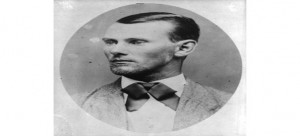 1. Jesse James
1. Jesse James
Jesse James was a gang leader who was born in 1847. He married his cousin- a woman who was so close to the family that she was named after his mother. The couple had two children and lived happily ever after till the gang leader died in 1882.
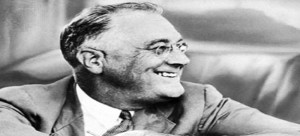 2. Franklin D. Roosevelt
2. Franklin D. Roosevelt
This former American president and was fondly referred to as FDR during his time. He had met Eleanor when they were children but the two met again at a dinner hosted by Franklin D. Roosevelt’s fifth cousin and Eleanor’s mother’s brother. Even though his mother was fiercely against it, the two got married in 1905 and gave birth to six children.
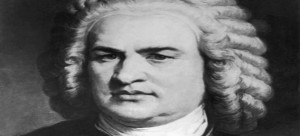 3. Johann Sebastian Bach
3. Johann Sebastian Bach
John Sebastian Bach is a well-known composer and violinist who built the foundation of the Baroque period. He was tied in holy matrimony to his second cousin, Maria Barbara Bach in 1707 but sadly, she died 13 years into the marriage. The brilliant organist did not waste too much time after and was remarried by 1722.
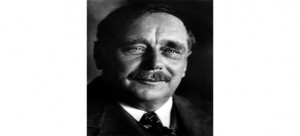 4. H.G. Wells
4. H.G. Wells
H.G. Wells was an exceptional author and is said to have given rise to the genre of science fiction as we know it today. He married Isabel Mary Wells, his first cousin but the marriage ended after three years. He will always be remembered for his work, out of which The Time Machine was the best.
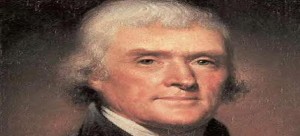 5. Thomas Jefferson
5. Thomas Jefferson
Thomas Jefferson held the presidential term for 8 years and was America’s third president. He married Martha Wayles Skelton Jefferson, his third cousin when he was 29 years old and they gave birth to six children. She died eleven years later and he never got married again.
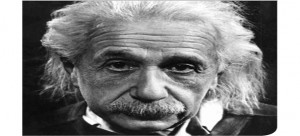 6. Albert Einstein
6. Albert Einstein
Albert Einstein was a brilliant scientist but many people don’t know that he was an extremely unfaithful man and could not help but cheat on his wives and girlfriends. He married Elsa, his second cousin after leaving his first wife. Elsa passed away 17 years later and he got involved with a number of women till his death. Now why would anybody want to have a relationship with such an odd looking man?
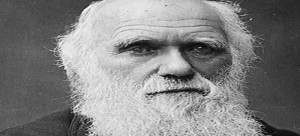 7. Charles Darwin
7. Charles Darwin
Charles Darwin came up with the theory of evolution and natural selection. He also married his first cousin and they had ten children.
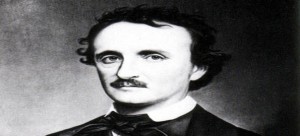 8. Edgar Allan Poe
8. Edgar Allan Poe
Edgar Allan Poe is a world-renowned poet who moved in with his relatives when his mother died and his father abandoned him. He was 20 years old at the time and found himself falling in love with his 7 year old cousin. He waited for 6 years after which the two got married.
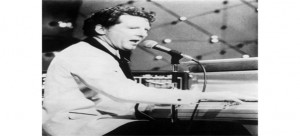 9. Jerry Lee Lewis
9. Jerry Lee Lewis
Jerry Lee Lewis is 74 years old and was one of the earliest pioneers of the genre of rock and roll. He got married to Myra, his cousin in 1957 and that combined with the fact that the girl was only 13 years old created a lot of controversy and the singer lost a lot of respect among his fans. He had two children with her.
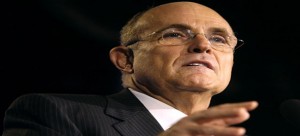 10. Rudy Giuliani
10. Rudy Giuliani
Rudy Guiliani married a woman who he thought to be his third cousin. They found out later that she was actually his second cousin!
 1. Jesse James
1. Jesse James Jesse James was a gang leader who was born in 1847. He married his cousin- a woman who was so close to the family that she was named after his mother. The couple had two children and lived happily ever after till the gang leader died in 1882.
 2. Franklin D. Roosevelt
2. Franklin D. RooseveltThis former American president and was fondly referred to as FDR during his time. He had met Eleanor when they were children but the two met again at a dinner hosted by Franklin D. Roosevelt’s fifth cousin and Eleanor’s mother’s brother. Even though his mother was fiercely against it, the two got married in 1905 and gave birth to six children.
 3. Johann Sebastian Bach
3. Johann Sebastian BachJohn Sebastian Bach is a well-known composer and violinist who built the foundation of the Baroque period. He was tied in holy matrimony to his second cousin, Maria Barbara Bach in 1707 but sadly, she died 13 years into the marriage. The brilliant organist did not waste too much time after and was remarried by 1722.
 4. H.G. Wells
4. H.G. WellsH.G. Wells was an exceptional author and is said to have given rise to the genre of science fiction as we know it today. He married Isabel Mary Wells, his first cousin but the marriage ended after three years. He will always be remembered for his work, out of which The Time Machine was the best.
 5. Thomas Jefferson
5. Thomas JeffersonThomas Jefferson held the presidential term for 8 years and was America’s third president. He married Martha Wayles Skelton Jefferson, his third cousin when he was 29 years old and they gave birth to six children. She died eleven years later and he never got married again.
 6. Albert Einstein
6. Albert EinsteinAlbert Einstein was a brilliant scientist but many people don’t know that he was an extremely unfaithful man and could not help but cheat on his wives and girlfriends. He married Elsa, his second cousin after leaving his first wife. Elsa passed away 17 years later and he got involved with a number of women till his death. Now why would anybody want to have a relationship with such an odd looking man?
 7. Charles Darwin
7. Charles DarwinCharles Darwin came up with the theory of evolution and natural selection. He also married his first cousin and they had ten children.
 8. Edgar Allan Poe
8. Edgar Allan PoeEdgar Allan Poe is a world-renowned poet who moved in with his relatives when his mother died and his father abandoned him. He was 20 years old at the time and found himself falling in love with his 7 year old cousin. He waited for 6 years after which the two got married.
 9. Jerry Lee Lewis
9. Jerry Lee LewisJerry Lee Lewis is 74 years old and was one of the earliest pioneers of the genre of rock and roll. He got married to Myra, his cousin in 1957 and that combined with the fact that the girl was only 13 years old created a lot of controversy and the singer lost a lot of respect among his fans. He had two children with her.
 10. Rudy Giuliani
10. Rudy GiulianiRudy Guiliani married a woman who he thought to be his third cousin. They found out later that she was actually his second cousin!
Subscribe to:
Posts (Atom)
